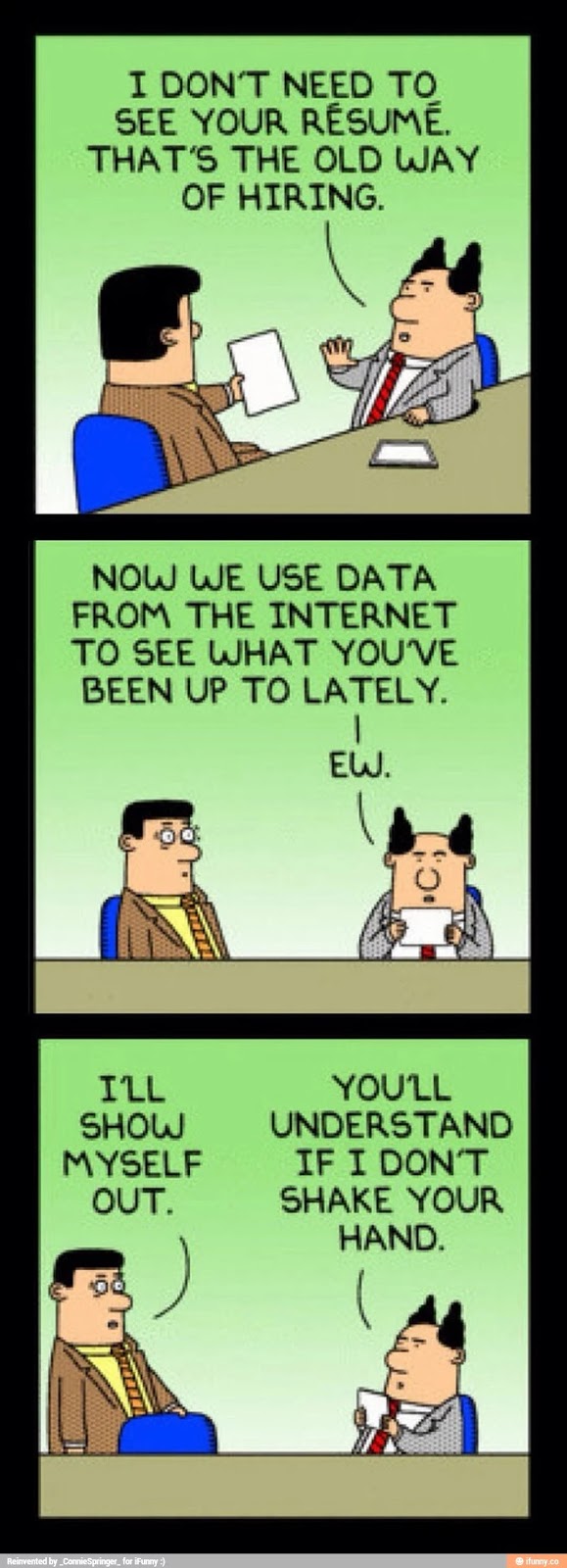It renewed my commitment to think critically about social media and teach my students to do the same. It's so important that today's students be aware of their digital portfolios so that they don't miss educational and career opportunities, as this cartoon so perfectly illustrates. If students effectively cultivate a digital portfolio that expresses their interests and experience, they won't fall into the trap in the cartoon. On the contrary, opportunities will find them through this portfolio. And, what more could we hope for as educators?
Every educator agrees that an intelligently crafted digital portfolio will serve a student well in college admission, graduate school and beyond. Yet, we're not teaching the art of a digital portfolio in schools. A properly polished digital footprint can show schools and employers a student's interest, initiative, hard-work, community outreach and scholarly contribution. Nevertheless, schools continue to tell students to complete and print rigid assignments rather than publish something in which the student is interested.
Not only do we not teach this skill, even worse, we often discourage this with strict social media policies that keep the student's digital life out-of-sight and out-of-mind of the administrators where online activities become even more likely to damage students' digital image.
Not only do we not teach this skill, even worse, we often discourage this with strict social media policies that keep the student's digital life out-of-sight and out-of-mind of the administrators where online activities become even more likely to damage students' digital image.
For a chance to teach teenagers the art of a digital citizenship and help them construct digital portfolio, I capitalize on a progressive summer program that lets me choose my own curriculum. In my media course, I evaluate students on their use of social media. They're required to pursue interests through twitter, Digg, subscription emails, podcasts, social news sites. They're constantly refining what hits their screen so that they consume informational content about their passions. And, I don't grade submitted essays or projects, I give students pointers on how to improve the essays and projects before they publish them.
I teach branding, asking the students to evaluate the sources they're reading and investigate the digital portfolio of our guest speakers, their peers, and their role models. Then, I help them create their own brand and find ways to consume, curate and then create in ways that will sculpt a small profile, even if it's just what they save/favorite on Twitter, Diigo, Evernote or Google Drive.
It is my hope that by the end of the summer the students 1) learn the power of the internet; 2) use it to ensure that interesting, informational content hits their screens for consumption; 3) learn the tools necessary to efficiently consume, post, send and curate information to sculpt a digital portfolio.
If they master this, doors will open for them; they'll be lightyears ahead of the character in the Dilbert cartoon--avoiding an internet presence that eliminates them from contention while gaining a digital profile that will attract academic and employment opportunities.
